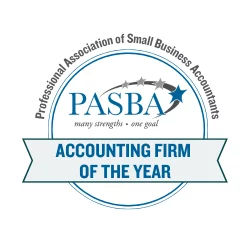An EDD audit of your payroll records can be time-consuming and nerve-wracking for everyone. Find out how to prepare for your California business.
The Employment Development Department (EDD) is the governmental department in charge of managing the CA’s payroll tax laws and gathering payroll taxes from CA employers. There are four types of payroll taxes they manage: Unemployment Insurance (UI), Employment Training Tax (ETT), State Disability Insurance(SCI) and Personal Income Tax (PIT). They conduct audits to ensure employers pay the appropriate amount of payroll tax as well as properly classify their workers as employees or independent contractors.
How EDD Audits Are Triggered
There are a lot of situations that can trigger a lead for an EDD audit. Here are four most common circumstances that prompt an investigation.
- Random audits to verify company compliance: There is no way to completely safeguard against verification audits by the EDD as some are completed randomly.
- Independent contractors filing for unemployment: Independent contractors are not eligible for unemployment in CA so if they file for it, an EDD audit is automatically triggered.
- Late payment of taxes/late filing of payroll tax returns: Delinquent payroll tax filing or payment can automatically trigger an EDD audit.
- Failing to pay wages on time: An employee report of delayed payroll as well as failure to collect or remit SDI or PIT withholdings can lead to scrutiny by the EDD.
The Two Stages Of The EDD Audit
When a lead has been sent to the EDD or a name has been randomly selected for audit, the process begins with an audit notice with a questionnaire and request for documentation sent through the mail. The audit notice informs you why you are receiving the notice and what your next steps are. Other steps in the procedure include an entrance interview, a review of financial documents, request for additional clarifying documents, and a Proposed Notice of Assessment (PNA).
First Stage Of Audit: Documentation and Questionnaire
You will be informed that you are being audited when you receive an audit notice in the mail. Included will be a request for you to provide specific financial documents within ten days of receiving the notice. It is in your best interest to contact a tax expert to help you through each phase of the audit.
Minimum Documents Requested
At minimal, these Documents will be Requested
- Questionnaire from the EDD: These questions are designed to elicit admissions and to help the auditor develop their course of action for the audit.
- Verification of business ownership: One of the following is required:
- City business license
- CA Department of Tax and Fee Administration number
- Any license required to operate your business, such as a liquor license, CA Contractor’s State License, etc.
- Written agreements (such as Partnership Agreement or Articles of Incorporation)
- Check registers and stubs
- Bank statements and canceled checks
- General ledger and journal
- Annual financial statements (income and expense statements, balance sheets, etc.)
- Vouchers and pay-out slips (cash payment records)
- 1099 Form(s)
What The Auditors Will Be Looking For
The auditors will be looking for:
- Properly reported gross and taxable wages
- Amount of payroll tax paid
- Payments that can be potentially re-classified as taxable wages
- Misclassification issues with employees, contractors, and outside workers
Second Stage Of Audit: The Meeting
An entrance interview will be scheduled by the commission. It can be attended by the business owner and an expert representative such as a CPA or tax lawyer. The purpose of this meeting is to ensure you know the reason for the audit and the audit process, for the auditor to gain information about your business and the organization of your business and business records, as well as answer any questions you have about the audit. Discussion may include:
- Review of payroll records to ensure proper tracking methods
- Verification of business entity
- Verification of worker classification as employee/independent contractor (EDD may classify differently than IRS)
- Clarification of unreported payments and nature of working relationship with employees/contractors
What Happens When You’re Chosen For A Complete Audit?
When you are chosen for a complete audit, there is a lot of back and forth that may occur between you and the auditor to provide clarification. Be careful to be consistent with your responses to avoid penalties and fines. A professional can help.
- The EDD will look for verification that the employer’s gross wages and taxable wages have been properly recorded
- The EDD will also need verification that the employer has correctly withheld and reported the personal income tax for wages paid to employees H2: How Long Will The Complete Audit Take?
The length of the EDD audit will vary between several months to several years depending on the communication and amount of verification required. While the initial request for documentation will include the most recent year, requests can be made for up to 3 or more years of verifying evidence.
- From receipt of initial questionnaire to issuance of final report, a complete review could take an average of six months.
- There are some circumstances that can extend the timeline such as a change in auditors, conflicting information between EDD and IRS auditors, and the actual review of payroll records
What Happens After The Audit?
The auditor will compile the findings in a PNA. The business owner may dispute the findings by providing more evidence. Ultimately, the auditor will turn the PNA into an NA (Notice of Assessment.) There are four possible outcomes of the findings in the EDD audit process.
Overpayment Of Taxes
Overpayment of taxes may be found and a refund issued to the business.
Underpayment Of Taxes
Underpayment of taxes would require the business pay the difference between what was paid and what the EDD determines is owed.
Both Overpayment And Underpayment Of Taxes
Both Overpayment and underpayment of taxes are determined based on different years in the audit.
No-Change Audit
A No-Change Audit means there is no difference in what is paid and what is owed is found.
Tips For Going Through The Audit Process Faster And Easier
The EDD tends to take a more aggressive approach to auditing than the IRS. Facing an EDD audit may seem daunting, but here are some tips to guide you to a smoother process.
- Always come well-prepared, especially with documents. Have more information ready than they have requested.
- Develop a well-organized plan and a well-developed presentation to guide the auditor to see that they will not find evidence to support the reason for the audit.
- Never take an adversarial approach toward the auditor. It never helps your case to be difficult to work with or obstruct the auditors investigation.
- Don’t be too “helpful” by giving too much information. Answer the questions asked but don’t provide extra information that may bring more scrutiny than the initial inquiry.
Tips for Avoiding An Audit In The First Place
While you may never fully insulate yourself from being randomly selected for an EDD audit, here are some ways to avoid triggering an audit.
- Classify employees properly
- Pay wages and taxes accurately
- Be fair with workers
- Be honest with the government
When Faced With An Audit, Consult With A Qualified Tax Professional
To protect your business and limit your tax liabilities, it is best practice to hire a skilled tax professional like J.R.Martin as soon as you receive an audit notice. An expert can help you through each step of the process including answering the questionnaire, helping you obtain the proper financial documents, and communicating with your auditor.
For more labor related topics, click here to learn how to stay in compliance with employee reimbursements or here to understand the Mandatory Retirement Plan.



